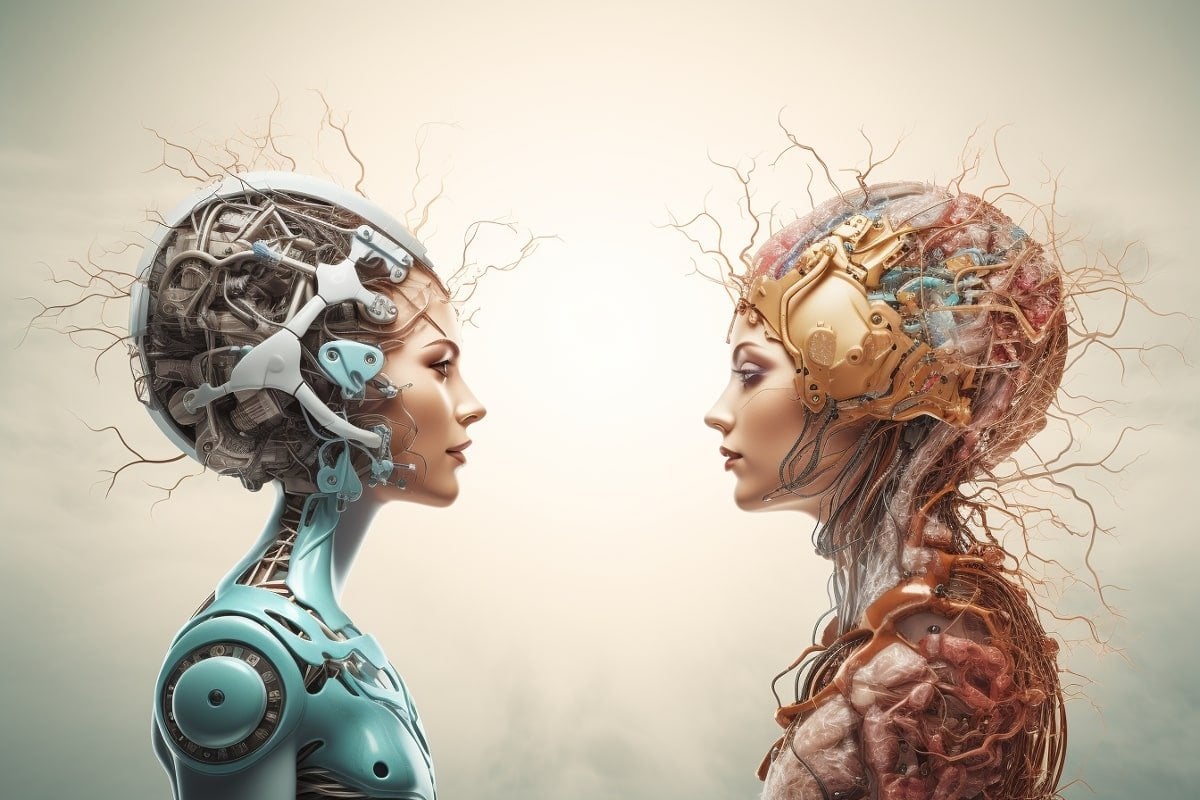Summary: As artificial intelligence (AI) evolves, its intersection with neuroscience stirs both anticipation and apprehension. Fears related to AI – loss of control, privacy, and human value – stem from our neural responses to unfamiliar and potentially threatening situations.
We explore how neuroscience helps us understand these fears and suggests ways to address them responsibly. This involves dispelling misconceptions about AI consciousness, establishing ethical frameworks for data privacy, and promoting AI as a collaborator rather than a competitor.
Key Facts:
- Our fear of AI is rooted in the amygdala’s response to uncertainty and potential threats.
- Fears of AI commonly revolve around the loss of control, privacy, and human value, as AI develops capacities that might outperform human abilities.
- Addressing these fears responsibly involves understanding that AI mimics but doesn’t possess consciousness, ensuring ethical data handling, and promoting a ‘human-in-the-loop’ concept where AI collaborates with, rather than replaces, humans.
Source: Neuroscience News
Fear of the unknown is a universal human experience. With the rapid advancements in artificial intelligence (AI), our understanding and perceptions of this technology’s potential – and its threats – are evolving.
The intersection of neuroscience and AI raises both excitement and fear, feeding our imagination with dystopian narratives about sentient machines or providing us hope for a future of enhanced human cognition and medical breakthroughs.
Here, we explore the reasons behind these fears, grounded in our understanding of neuroscience, and propose paths toward constructive dialogue and responsible AI development.
The Neuroscience of Fear
Fear, at its core, is a primal emotion rooted in our survival mechanism. It serves to protect us from potential harm, creating a heightened state of alertness.
The amygdala, a small almond-shaped region deep within the brain, is instrumental in our fear response. It processes emotional information, especially related to threats, and triggers fear responses by communicating with other brain regions.
Our understanding of AI, a complex and novel concept, creates uncertainty, a key element that can trigger fear.
AI and Neuroscience: A Dialectical Relationship
AI’s development and its integration into our lives is a significant change, prompting valid fears. The uncanny similarity between AI and human cognition can induce fear, partly due to the human brain’s tendency to anthropomorphize non-human entities.
This cognitive bias, deeply ingrained in our neural networks, can make us perceive AI as a potential competitor or threat.
Furthermore, recent progress in AI development has been fueled by insights from neuroscience. Machine learning algorithms, particularly artificial neural networks, are loosely inspired by the human brain’s structure and function.
This bidirectional relationship between AI and neuroscience, where neuroscience inspires AI design and AI, in turn, offers computational models to understand brain processes, has led to fears about AI achieving consciousness or surpassing human intelligence
The Fear of AI
The fear of AI often boils down to the fear of loss – loss of control, loss of privacy, and loss of human value. The perception of AI as a sentient being out of human control is terrifying, a fear perpetuated by popular media and science fiction.
Moreover, AI systems’ capabilities for data analysis, coupled with their lack of transparency, raise valid fears about privacy and surveillance.
Another fear is the loss of human value due to AI outperforming humans in various tasks. The impact of AI on employment and societal structure has been a significant source of concern, considering recent advancements in robotics and automation).
The fear that AI might eventually replace humans in most areas of life challenges our sense of purpose and identity.
Addressing Fears and Building Responsible AI
While these fears are valid, it is crucial to remember that AI is a tool created by humans and for humans. AI does not possess consciousness or emotions; it only mimics cognitive processes based on its programming and available data. This understanding is vital in dispelling fears of a sentient AI.
Addressing privacy concerns requires establishing robust legal and ethical frameworks for data handling and algorithmic transparency.
Furthermore, interdisciplinary dialogue between neuroscientists, AI researchers, ethicists, and policymakers is crucial in navigating the societal impacts of AI and minimizing its risks.
Emphasizing the concept of “human-in-the-loop” AI, where AI assists rather than replaces humans, can alleviate fears of human obsolescence. Instead of viewing AI as a competitor, we can view it as a collaborator augmenting human capabilities.
The fear of AI, deeply rooted in our neural mechanisms, reflects our uncertainties about this rapidly evolving technology. However, understanding these fears and proactively addressing them is crucial for responsible AI development and integration.
By fostering constructive dialogue, establishing ethical guidelines, and promoting the vision of AI as a collaborator, we can mitigate these fears and harness AI’s potential responsibly and effectively.
About this artificial intelligence and neuroscience research news
Author: Neuroscience News Communications
Source: Neuroscience News
Contact: Neuroscience News Communications – Neuroscience News
Image: The image is credited to Neuroscience News
Citations:
“Patiency is not a virtue: the design of intelligent systems and systems of ethics” by Joanna J. Bryson. Ethics and Information Technology
“Hopes and fears for intelligent machines in fiction and reality” by Stephen Cave et al. Nature Machine Intelligence
“What AI can and can’t do (yet) for your business” by Chui, M et al. McKinsey Quarterly
“What is consciousness, and could machines have it?” by Dehaene, S et al. Science
“On seeing human: a three-factor theory of anthropomorphism” by Epley, N et al. Psychological Review
“Neuroscience-inspired artificial intelligence” by Hassabis, D et al. Neuron
“Feelings: What are they & how does the brain make them?” by Joseph E. LeDoux. Daedalus
“Evidence that neural information flow is reversed between object perception and object reconstruction from memory” by Juan Linde-Domingo et al. Nature Communications
“On the origin of synthetic life: attribution of output to a particular algorithm” by Roman V Yampolskiy. Physica Scripta








